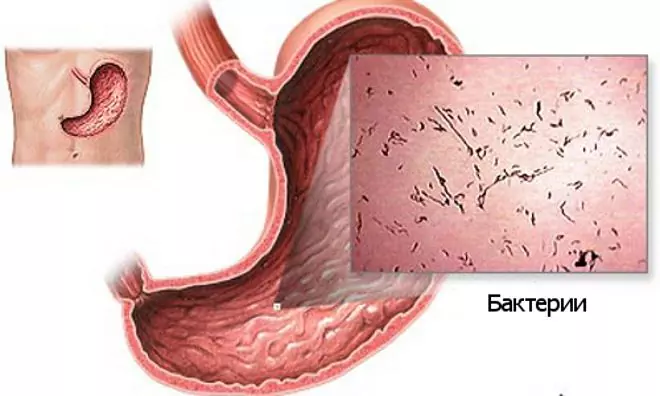- Author Rachel Wainwright [email protected].
- Public 2023-12-15 07:39.
- Last modified 2025-11-02 20:14.
Dinolak
Dinolac: instructions for use and reviews
- 1. Release form and composition
- 2. Pharmacological properties
- 3. Indications for use
- 4. Contraindications
- 5. Method of application and dosage
- 6. Side effects
- 7. Overdose
- 8. Special instructions
- 9. Application during pregnancy and lactation
- 10. Use in childhood
- 11. Drug interactions
- 12. Analogs
- 13. Terms and conditions of storage
- 14. Terms of dispensing from pharmacies
- 15. Reviews
- 16. Price in pharmacies
Latin name: Dinolak
ATX code: AO6AD61
Active ingredient: Lactulose + Simethicone (Lactulosum + Simethiconum)
Manufacturer: AVVA-RUS, Russia
Description and photo update: 18.10.2018

Dinolac is a combined laxative drug.
Release form and composition
Dosage form - an emulsion for oral administration: a cloudy liquid with a homogeneous structure from yellow to almost colorless (100 ml, 200 ml, 500 ml or 1000 ml each in a polyethylene bottle complete with a measuring cup).
100 ml of emulsion contains:
- active ingredients: lactulose - 66 g, simethicone - 0.8 g;
- auxiliary components: citric acid, povidone (polyvinylpyrrolidone), aerosil (colloidal silicon dioxide).
Pharmacological properties
Pharmacodynamics
Synthetic disaccharide - lactulose, consisting of fructose and galactose, under the influence of disaccharidases of the microflora of the large intestine is broken down into monosaccharides and short-chain carboxylic acids. Short-chain carboxylic acids, by reducing the level of acidity in the large intestine, enhance peristalsis and suppress the growth of proteolytic microflora. Rapid absorption of short-chain fatty acids in the distal colon results in improved absorption of water and electrolytes.
Lactulose normalizes bowel function, has a laxative effect, stimulates the growth and reproduction of normal intestinal microflora.
After oral administration, the effect of lactulose occurs within 24-48 hours.
The defoaming properties of simethicone reduce the surface tension at the interface, counteracting the formation and facilitating the destruction of gas bubbles in the contents of the gastrointestinal tract (GIT). The gases released are absorbed by the intestinal walls or excreted from the body.
Reduces the feeling of discomfort in the abdominal area, which may accompany the action of lactulose.
Pharmacokinetics
Lactulose enters the large intestine practically unchanged. The drug is excreted from the body with intestinal contents, and only 3% is excreted through the kidneys.
Simethicone is not absorbed in the digestive tract, it is excreted from the body unchanged.
Indications for use
- constipation;
- prevention and treatment of hepatic encephalopathy, hepatic precoma and coma;
- hyperammonemia;
- regulation of stool for hemorrhoids, the need for surgery on the colon and perianal region;
- restoration of intestinal microflora after antibiotic therapy;
- prevention and treatment of dysbiosis of various etiologies.
Contraindications
- intestinal obstruction;
- galactosemia;
- intolerance to fructose or galactose, glucose-galactose malabsorption syndrome, lactase deficiency;
- hypersensitivity to the components of the drug.
Caution should be exercised in patients with diabetes mellitus.
Instructions for use of Dinolak: method and dosage
The emulsion is taken orally using a measuring cup.
Shake the contents of the bottle before use.
During the treatment period, it is necessary to take 1500-2000 ml of liquid per day.
Recommended dosage:
- constipation: daily dose for children under 1 year old - 5 ml, children aged 1-6 years - 5-10 ml, 7-14 years old - 15 ml, patients over 14 years old - the first 3 days, 15-45 ml each, then by 10-30 ml. For children, Dinolac should be taken once, during breakfast;
- hyperammonemia, hepatic coma, precoma, hepatic encephalopathy: the initial dose is 30-50 ml 3 times a day. The maximum daily dose is 190 ml. The maintenance dose is selected individually, it should provide soft stools no more than 2-3 times a day;
- intestinal dysbiosis: patients over 7 years old - 5 ml 1-2 times a day, the dose should be selected individually.
Side effects
Long-term treatment of hepatic encephalopathy with high doses of the drug can cause a violation of the water-electrolyte balance, which is manifested by weakness, nausea, increased fatigue, arrhythmia, headache, dizziness, myalgia.
Overdose
Symptoms: abdominal pain, diarrhea.
The patient needs a dose adjustment of the laxative.
special instructions
Patients who are on prolonged (more than 6 months) therapy with Dinolac are recommended to periodically conduct a study to determine the content of electrolytes in the blood plasma.
Since high doses of the drug are usually taken in the treatment of hepatic precoma or coma, patients with diabetes should take into account the possible content in the emulsion of a small amount of bound sugars, such as lactose, galactose or fructose.
Influence on the ability to drive vehicles and complex mechanisms
According to the instructions, Dinolac does not affect the patient's ability to control various mechanisms, including a car.
Application during pregnancy and lactation
During pregnancy and breastfeeding, the drug can be used according to clinical indications.
Pediatric use
Like other laxatives, Dinolac for children can only be used under medical supervision and in exceptional cases.
Drug interactions
The simultaneous use of clindamycin, neomycin, rifaximin and other antibiotics and antacids active against bifidobacteria and lactobacilli helps to reduce the effect of this drug.
Analogs
Dinolak's analogs are: drugs with a similar effect - Bisacodyl-Akrikhin, Guttalax, Dulcolax, Duphalac, Portalak.
Terms and conditions of storage
Keep out of the reach of children.
Store at temperatures up to 25 ° C in a dark place.
The shelf life is 3 years.
Terms of dispensing from pharmacies
Available without a prescription.
Reviews about Dinolak
Reviews of Dinolac are mostly positive; users consider the benefits of the drug to be the rapid elimination of constipation in different age categories of patients, pleasant taste, and regulation of the intestines.
The price of Dinolac in pharmacies
The price of Dinolac, depending on the volume of the bottle: 1000 ml - from 814 rubles, 500 ml - from 497 rubles, 200 ml - from 357 rubles, 100 ml - from 248 rubles.

Anna Kozlova Medical journalist About the author
Education: Rostov State Medical University, specialty "General Medicine".
Information about the drug is generalized, provided for informational purposes only and does not replace the official instructions. Self-medication is hazardous to health!






